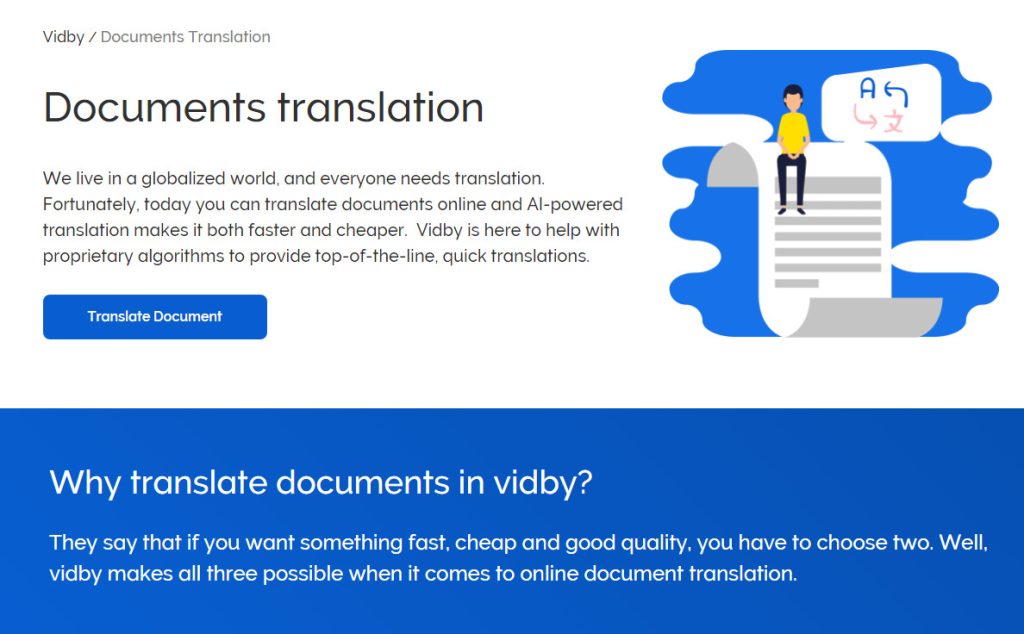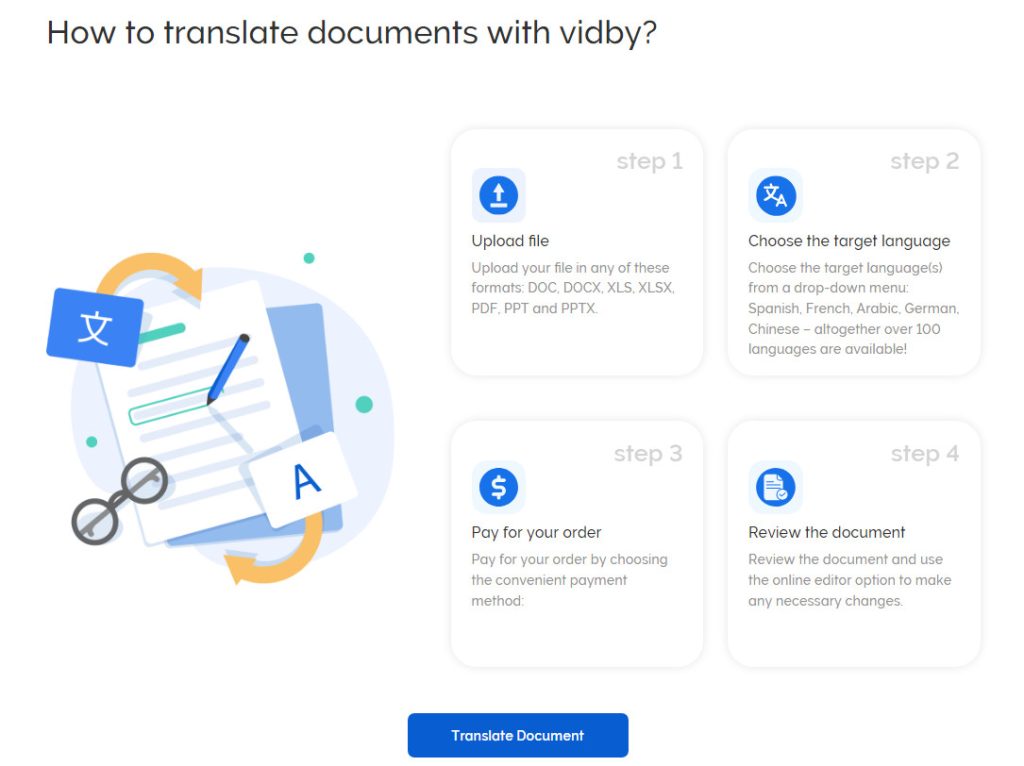AI translators are used in various legal sectors - legal practice, notarial transactions, insurance procedures, legal support for business. They are relevant for both internal document management and communication with clients. Primarily, this concerns international companies and governmental organizations dealing with legal matters.
 Overall, artificial intelligence plays a key role in improving the efficiency, accuracy, and accessibility of legal document translation, making this process more reliable and convenient for lawyers, attorneys, and other legal professionals.
Overall, artificial intelligence plays a key role in improving the efficiency, accuracy, and accessibility of legal document translation, making this process more reliable and convenient for lawyers, attorneys, and other legal professionals.
In which areas are AI translators used?
Artificial intelligence-based translators significantly facilitate work with legal documents in business management, education, and international communications. Here are the most common spheres:- Education. Students, teachers, and researchers in the legal field can use automatic document translation services to analyze, for example, legislative acts and court decisions presented in another language.
- Corporations. International companies employ lawyers who deal with various legal documents: contract review, amendments to articles of incorporation, securities work, monitoring tax risks when operating abroad.
- International governmental and public organizations. The most well-known of them include the International Organization for Migration (IOM), the United Nations (UN), the World Health Organization (WHO), UNESCO, the International Atomic Energy Agency (IAEA), the International Committee of the Red Cross, and many others. They all work with legal documents, which often require translation.
Revolution in legal document translation
In the past, legal document translation was carried out manually by professional translators proficient in both languages and possessing expertise in legal terminology. This required not only language knowledge but also understanding of legal systems and peculiarities of each country. This process could take weeks and required high compensation. The first online translators, including those in legal practice, began to be used at the end of the 20th - beginning of the 21st century:- Babel Fish. It was one of the first online services providing free text translation, including legal translation. Although the quality was far from perfect, the company became one of the pioneers in its field and paved the way for subsequent developments.
- Google Translate. Launched in 2006, the service represented a significant improvement in the quality and accessibility of the service. With constant algorithm updates, it became one of the most popular online translators not only for everyday use but also for working with legal documents.
- Neural networks. With the development of machine learning technologies in recent decades, advanced online translators have emerged, capable of providing accurate and high-quality results in legal practice. These include platforms like SDL Language Cloud, Lilt, and many others.
The role of artificial intelligence in legal document translation
Artificial intelligence (AI) plays a significant role in translating legal documents, providing a range of advantages and opportunities:- Automation and acceleration of the translation process. The use of artificial intelligence allows automating the translation process, speeding up task completion. This is particularly important when dealing with large volumes of documents or tight deadlines.
- Quality improvement. Modern machine translation systems based on artificial intelligence utilize neural networks and other advanced algorithms, enabling higher accuracy. This is especially crucial for legal document translation, where the correct interpretation of terms is critically important.
- Specialized models for legal terminology. Many machine translation systems focused on legal domains include specialized models designed to analyze specific terms and contexts. This ensures more precise and adequate text in the legal field.
- Cost reduction. Using AI can lower translation costs as there is no need to pay professional translators for every page.
- Scalability. AI-based machine translation systems can be used for translating both small documents and huge volumes of text without sacrificing quality.
 Overall, artificial intelligence plays a key role in improving the efficiency, accuracy, and accessibility of legal document translation, making this process more reliable and convenient for lawyers, attorneys, and other legal professionals.
Overall, artificial intelligence plays a key role in improving the efficiency, accuracy, and accessibility of legal document translation, making this process more reliable and convenient for lawyers, attorneys, and other legal professionals.
Shortcomings in AI translation
Despite numerous advantages, there are some drawbacks to using AI in legal document translation:- Limited accuracy and contextual understanding. AI may not always interpret complex phrases, expressions, and legal terms correctly in context. This can lead to misinterpretation, especially in texts with a high level of specialization.
- Lack of style and nuance sensitivity. Machines lack a sense of style and cannot grasp language and legal term nuances as humans do. This may result in translations sounding implausible or awkward, especially in documents requiring a formal and professional style.
- Limitations in translating specific terms. Some legal terms may be specific to a particular country, region, or legal system. AI may have a limited vocabulary and may not always translate such terms adequately.
- Issues with confidentiality and data security. AI-based translators typically require access to texts that may contain confidential information. This can raise concerns about data security, especially if these texts are stored on remote servers.
- Need for additional verification. It is important to remember that even the best machine translation systems cannot guarantee absolute accuracy and translation quality. Therefore, additional verification and editing of translated documents by professional translators are often required to ensure accuracy and proper understanding.

Limitations of AI translation
Translating legal documents is a complex and responsible process that involves a number of nuances and difficulties:- Specific terminology. Legal documents often contain specific terminology that may have different meanings in different jurisdictions or depending on the context. The translator needs to have a deep understanding of this terminology to accurately convey the document's meaning.
- Complex phrases and sentence structures. Legal texts often contain complex phrases and long sentences with many subordinate and introductory constructions. Translating these phrases and sentences requires special attention to syntactic structure and correct interpretation.
- Accuracy and completeness of the result. Legal documents must be translated with maximum accuracy and completeness to avoid misunderstandings and misinterpretations. Even small errors or omissions can have serious legal consequences.
- Compliance with legal norms and standards. The translator must take into account the legal norms and standards of both the source and target languages to ensure compliance with legislation and accepted norms of legal translation.
- Cultural differences. Legal norms and concepts may vary across different cultures and jurisdictions. The translator must take these cultural differences into account and adapt the translation to be understandable and accepted by the audience in the target culture.
- Confidentiality and data security. Since legal documents often contain confidential information, it is important to ensure the security and confidentiality of data during translation. This is especially relevant when using online platforms and services for translation.
